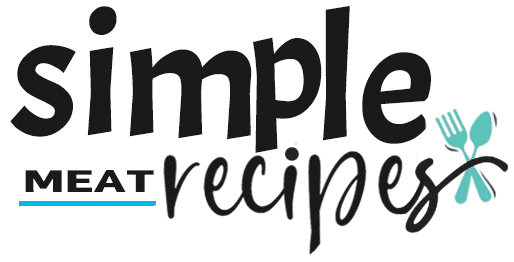Smoke Brisket At 180 Or 225 How to Make It Extra Juicy
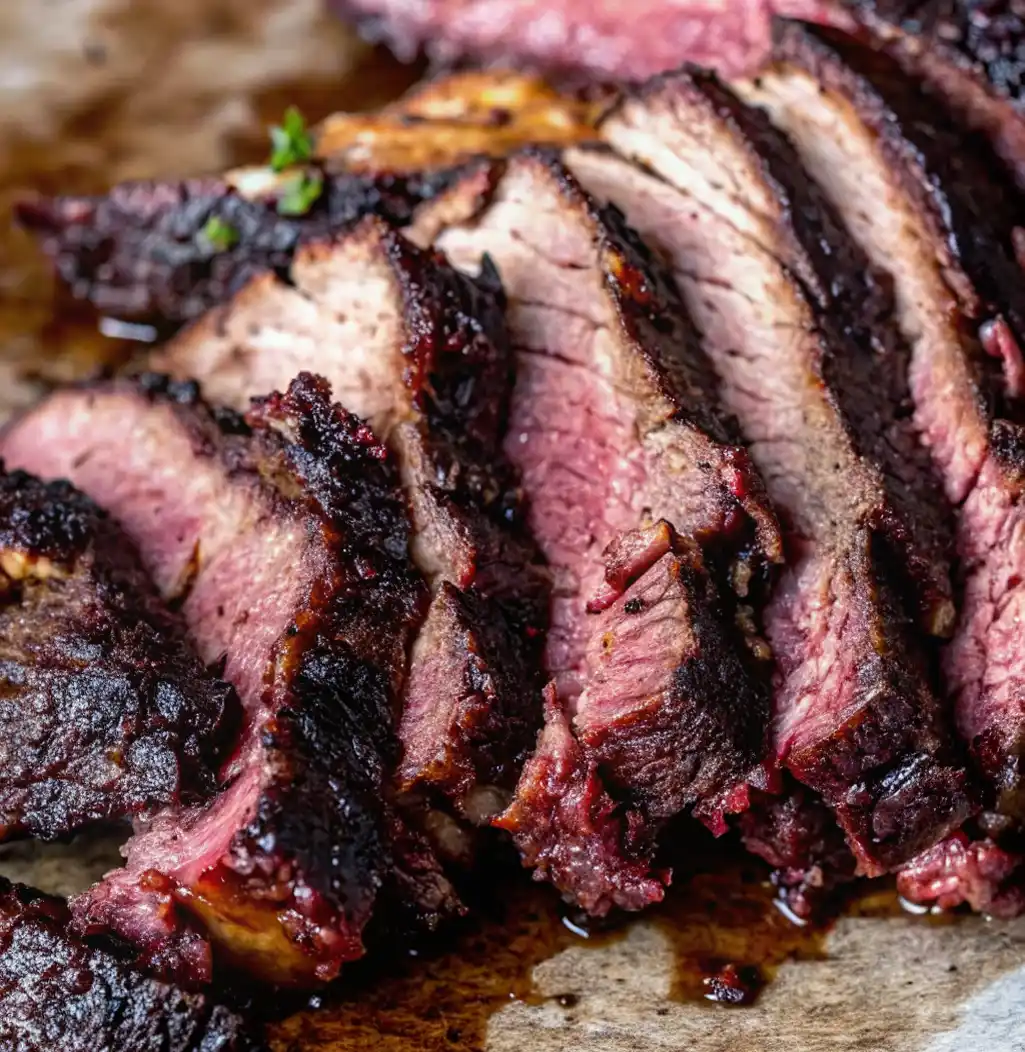
Are you ready to start smoking? Choose your temperature, follow our step by step, and prepare for the most good and delicious prekatite you have ever created. Share your results about smoke brisket at 180 or 225 the comments below, and subscribe to more BBQ tips and technologies that will raise the cooking game in the backyard!
Why You’ll Love This Guide
A comprehensive comparison of Smoke Brisket at 180 or 225°F, including timing, texture differences, and step-by-step instructions for both methods.
Table of Contents
The Great Temperature Debate: 180°F vs 225°F
Why Temperature Matters in Brisket Smoking
- The science of collagen breakdown
- How temperature affects bark formation
- Moisture retention at different heat levels
When to Choose 180°F
- Pros:
- Extended smoking time for maximum smoke flavor
- More forgiving temperature control
- Ideal for overnight cooks
- Cons:
- Longer cook times (14-18 hours)
- Risk of stalling longer
- Requires more fuel/pellets
When to Choose 225°F
- Pros:
- Faster cook times (8-12 hours)
- Better bark development
- More predictable timing
- Cons:
- Requires closer monitoring
- Less smoke absorption time
- Higher risk of overcooking
What is Ingredients Smoke Brisket At 180 Or 225
The Brisket
- Whole packer brisket (12-16 lbs recommended)
- Look for good marbling and flexibility
- Prime grade preferred, Choice acceptable
- Substitutions: Point cut or flat cut for smaller portions
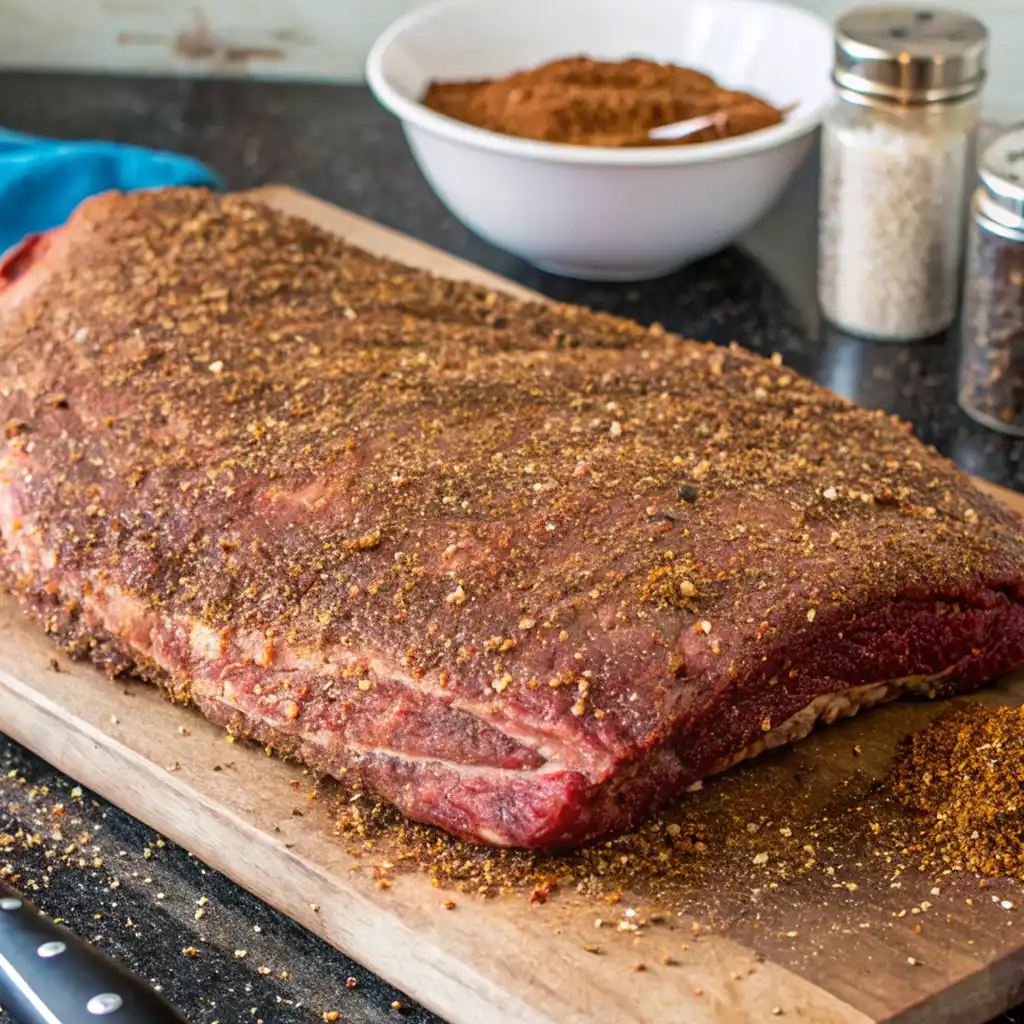
The Rub
- Coarse kosher salt – 2 tablespoons
- Coarse black pepper – 2 tablespoons
- Garlic powder – 1 tablespoon
- Onion powder – 1 tablespoon
- Paprika – 1 tablespoon
- Brown sugar – 1 tablespoon (optional)
Wood Selection
- Oak – Classic choice, mild flavor
- Hickory – Stronger smoke, use sparingly
- Cherry – Adds color and mild sweetness
- Apple – Subtle, fruity notes
Substitutions and Variations
- Gluten-free options: All ingredients naturally gluten-free
- Low-sodium: Reduce salt by half, add more herbs
- Spicy version: Add cayenne pepper or chipotle powder
Timing Your Smoke Brisket at 180 or 225
180°F Timeline
- Prep time: 30 minutes
- Cook time: 14-18 hours
- Rest time: 1-2 hours
- Total time: 16-20 hours
225°F Timeline
- Prep time: 30 minutes
- Cook time: 8-12 hours
- Rest time: 1-2 hours
- Total time: 10-14 hours
How to Smoke Brisket at 180°F
Preparation Steps Smoke Brisket at 180°F
- Trim the brisket, leaving ¼ inch of fat behind.
- Apply the rub – Season generously 2-24 hours before cooking
- Preheat smoker to 180°F
- Prepare wood – Soak chips or fill pellet hopper
The Smoking Process
- Place brisket fat-side down on grate
- Insert probe thermometer into thickest part
- Maintain 180°F throughout cook
- Every two hours, spritz with beef broth or apple juice.
- Monitor internal temperature – target 165°F for wrapping
- Wrap in foil or butcher paper when bark is set
- Continue cooking until internal temp reaches 203°F
- Rest for 1-2 hours before slicing
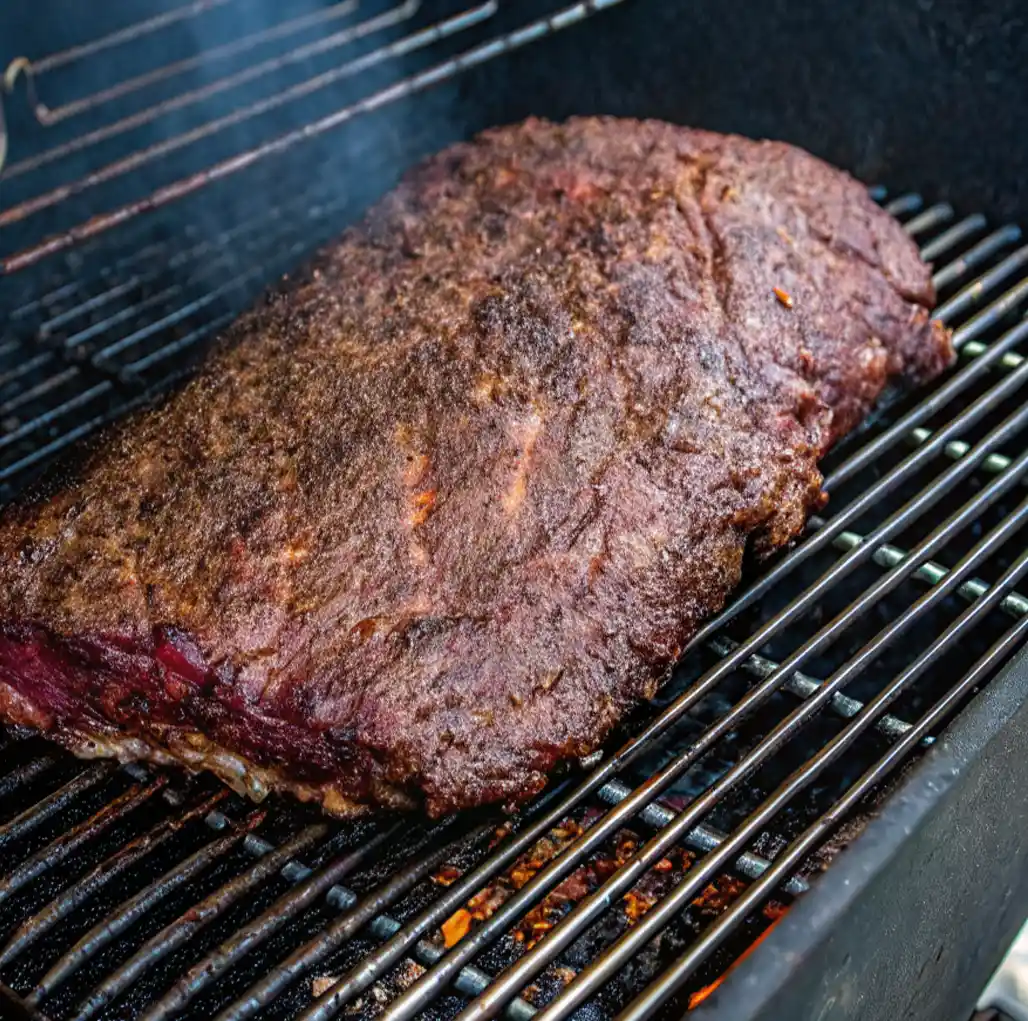
How to Smoke Brisket at 225°F
Modified Approach for Higher Heat
- Follow same prep steps as 180°F method
- Preheat smoker to 225°F
- Expect faster cooking – check every hour after hour 4
- Watch for earlier stall – typically around 150-160°F
- Wrap earlier – when bark reaches desired color
- Monitor closely – temperature rises faster after wrapping
- Same target temp: 203°F internal temperature
Key Differences at 225°F
- More active monitoring required
- Better bark development in shorter time
- Less smoke absorption due to shorter cook time
- More predictable timing for meal planning
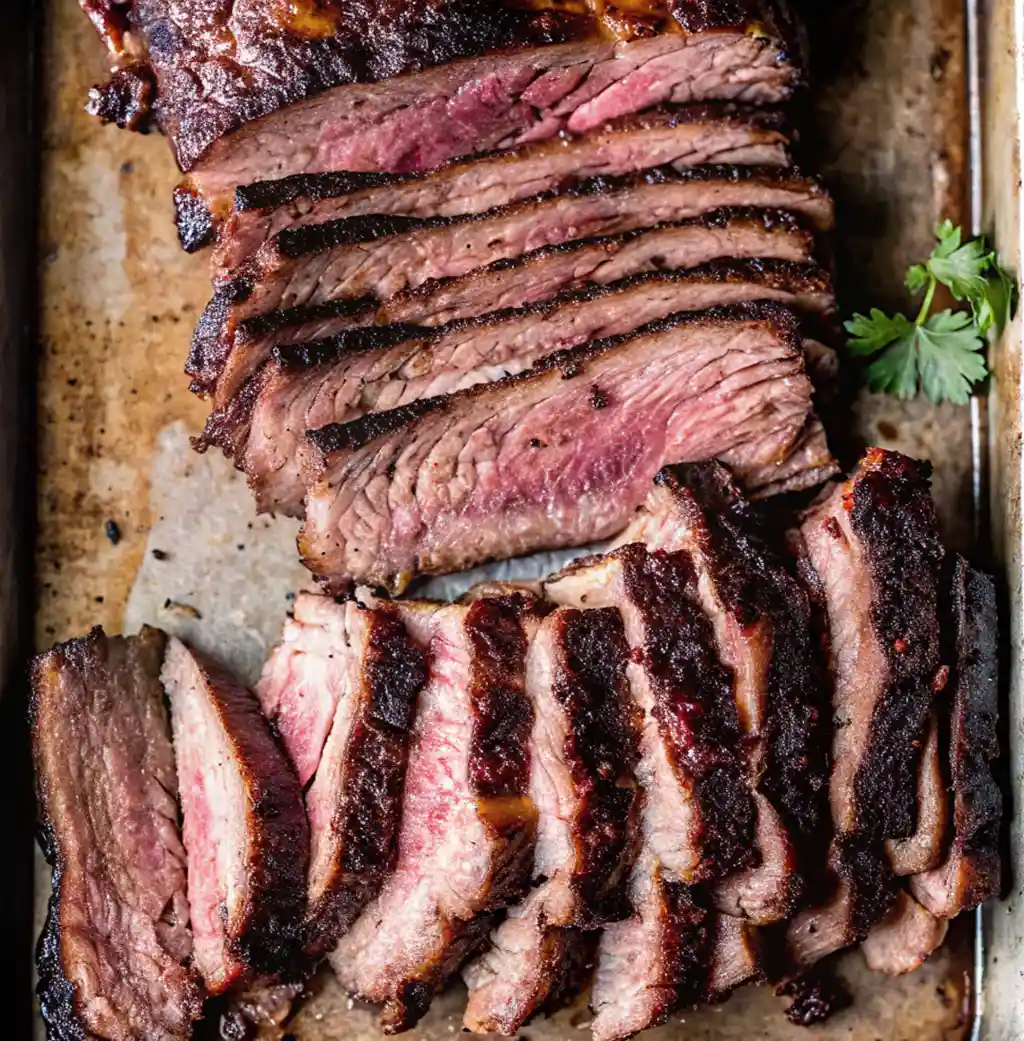
How to Smoke a Brisket on a Pellet Grill
Pellet Grill Advantages
- Consistent temperature control makes both 180°F and 225°F easier to maintain
- Set-and-forget convenience with digital controls
- Even heat distribution reduces hot spots
- Automatic pellet feeding maintains smoke throughout cook
Best Way to Smoke a Brisket on a Pellet Grill
- Select a temperature of 180°F for optimal flavor and 225°F for effectiveness.
- Preheat properly – allow 15-20 minutes for stabilization
- Use probe thermometer – take advantage of built-in temperature monitoring
- Maintain pellet supply – check hopper every 4-6 hours
- Don’t over-smoke – pellet grills provide consistent smoke without oversmoking
What Temp to Smoke a Brisket on a Pellet Grill
- 180°F: Best for overnight cooks and maximum smoke flavor
- 225°F: Ideal for day cooks and better bark formation
- Never exceed 250°F – higher temps can dry out the meat
How Long to Smoke a Brisket on a Pellet Grill
- At 180°F: 1-1.5 hours per pound
- At 225°F: 45-60 minutes per pound
- Plan for the stall: Add 3-4 hours to total time regardless of temperature
Tips for the Best Smoke Brisket At 180 Or 225
Expert Temperature Management
- Use dual-probe setup – one for ambient temp, one for meat
- Account for weather – cold weather extends cook times
- Place the thermometer probe on the thickest area of the flat surface.
Smoke Management Tips
- Less is more – thin blue smoke is ideal
- Avoid over-smoking – white billowing smoke creates bitter flavors
- Wood selection matters – match wood intensity to cook time
Wrapping Strategies
- Texas Crutch (foil): Faster cooking, more tender
- Butcher paper: Better bark retention, slightly longer cook
- Naked cook: Maximum bark, longest cook time
Serving Suggestions
Classic Presentations
- Slice against the grain – ¼ inch thick slices
- Separate the point and flat for different textures
- Serve with pickles and onions – cuts through richness
- Texas toast – perfect for brisket sandwiches
Creative Serving Ideas
- Brisket tacos with corn tortillas and salsa verde
- Loaded brisket nachos with queso and jalapeños
- Brisket hash for weekend brunch
- BBQ brisket pizza with red onions and BBQ sauce
Side Dish Pairings
- Coleslaw – creamy contrast to smoky meat
- Mac and cheese – ultimate comfort food combo
- Baked beans – traditional BBQ accompaniment
- Cornbread – soaks up those delicious juices
Try our How to Make a Steak Salad for a lighter option that pairs beautifully with leftover brisket.
How to Store and Reheat
To store smoked brisket, let it cool a bit, then slice or shred it and place it in airtight containers with a little of its cooking juices so it stays moist. Refrigerate for 3–4 days or freeze for longer. When reheating, warm it low and slow either wrapped in foil in the oven or gently in a skillet. Add a splash of broth if it seems dry. Honestly, it comes back beautifully.
More Great brisket Recipes
- Chopped Brisket: The Best and Easy Sandwich Recipe
- Pikes Peak Roast: 5 Secrets to the Best Flavor
- Sliced Beef Brisket
- Brisket Mac and Cheese
- Chopped Brisket: Easy Sandwich Recipe
- How and When to Wrap a Briske
Nutrition Facts
Per 4-oz Serving (Lean Portions)
- Calories: 290-320
- Protein: 28-32g
- Fat: 18-22g
- Carbohydrates: 0-2g
- Sodium: 180-220mg
- Iron: 15% DV
- Zinc: 35% DV
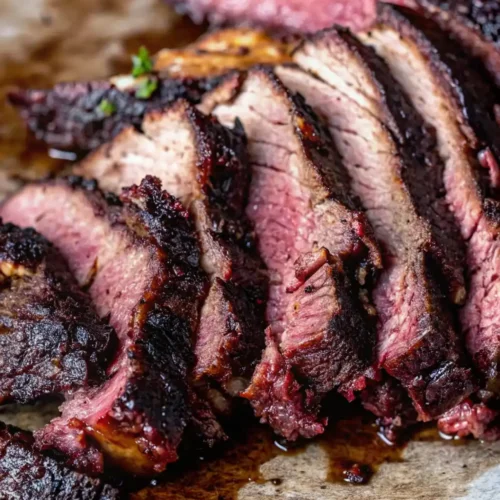
Smoke Brisket At 180 Or 225 How to Make It Extra Juicy
Ingredients
- Whole packer brisket 12-16 lbs recommended
- Look for good marbling and flexibility
- Prime grade preferred Choice acceptable
- Substitutions: Point cut or flat cut for smaller portions
- Coarse kosher salt – 2 tablespoons
- Coarse black pepper – 2 tablespoons
- Garlic powder – 1 tablespoon
- Onion powder – 1 tablespoon
- Paprika – 1 tablespoon
- Brown sugar – 1 tablespoon optional
Instructions
Preparation Steps Smoke Brisket at 180°F
- Trim the brisket, leaving ¼ inch of fat behind.Apply the rub – Season generously 2-24 hours before cookingPreheat smoker to 180°FPrepare wood – Soak chips or fill pellet hopper
The Smoking Process
- Place brisket fat-side down on grateInsert probe thermometer into thickest partMaintain 180°F throughout cookEvery two hours, spritz with beef broth or apple juice.Monitor internal temperature – target 165°F for wrappingWrap in foil or butcher paper when bark is setContinue cooking until internal temp reaches 203°FRest for 1-2 hours before slicing
Modified Approach for Higher Heat
- Follow same prep steps as 180°F methodPreheat smoker to 225°FExpect faster cooking – check every hour after hour 4Watch for earlier stall – typically around 150-160°FWrap earlier – when bark reaches desired colorMonitor closely – temperature rises faster after wrappingSame target temp: 203°F internal temperature
Key Differences at 225°F
- More active monitoring requiredBetter bark development in shorter timeLess smoke absorption due to shorter cook timeMore predictable timing for meal planning
Pellet Grill Advantages
- Consistent temperature control makes both 180°F and 225°F easier to maintainSet-and-forget convenience with digital controlsEven heat distribution reduces hot spotsAutomatic pellet feeding maintains smoke throughout cook
Best Way to Smoke a Brisket on a Pellet Grill
- Select a temperature of 180°F for optimal flavor and 225°F for effectiveness.Preheat properly – allow 15-20 minutes for stabilizationUse probe thermometer – take advantage of built-in temperature monitoringMaintain pellet supply – check hopper every 4-6 hoursDon’t over-smoke – pellet grills provide consistent smoke without oversmoking
What Temp to Smoke a Brisket on a Pellet Grill
- 180°F: Best for overnight cooks and maximum smoke flavor225°F: Ideal for day cooks and better bark formationNever exceed 250°F – higher temps can dry out the meat
How Long to Smoke a Brisket on a Pellet Grill
- At 180°F: 1-1.5 hours per poundAt 225°F: 45-60 minutes per poundPlan for the stall: Add 3-4 hours to total time regardless of temperature
Notes
Nutrition Facts
- Calories: 290-320
- Protein: 28-32g
- Fat: 18-22g
- Carbohydrates: 0-2g (from rub)
- Sodium: 180-220mg
- Iron: 15% DV
- Zinc: 35% DV
FAQ Section Smoke Brisket At 180 Or 225
Is it better to smoke brisket at 180 or 225?
225°F is better for most cooks—it speeds up the process while still delivering tender, juicy results.
Why is my brisket at 200 degrees but still tough?
It likely didn’t rest long enough, or it wasn’t cooked slowly enough for the connective tissue to fully break down.
Is 200 too low to smoke a brisket?
Yes, 200°F is often too low; it can dry out the brisket before it becomes tender.
Can I take my brisket out at 180?
Removing it at 180°F is too early; it won’t be tender enough for slicing or shredding.
What is the secret to a tender brisket?
Low and slow cooking, wrapping, and proper resting time are key to achieving a tender brisket.
Internal Link: Learn more advanced techniques in our comprehensive How to Smoke a Brisket on a Pellet Grill guide.
Conclusion
Whether you choose to smoke brisket at 180 or 225 degrees, success comes from understanding your equipment, planning your timeline, and cooking to temperature rather than time. Both methods produce championship-quality results when executed properly.
If you try this recipe, leave a comment or share your own twist on it, and if you enjoyed this recipe, subscribe for more.
There are no reviews yet. Be the first one to write one.
